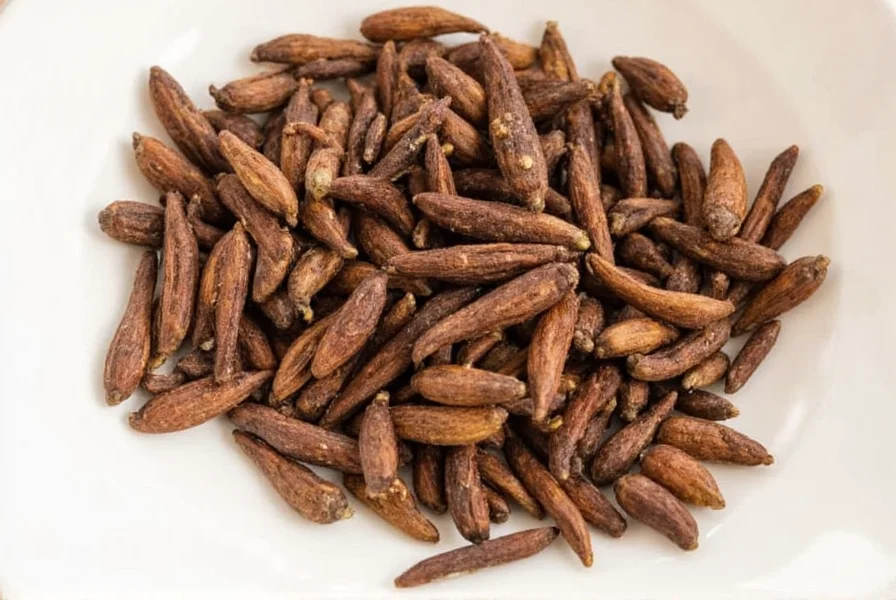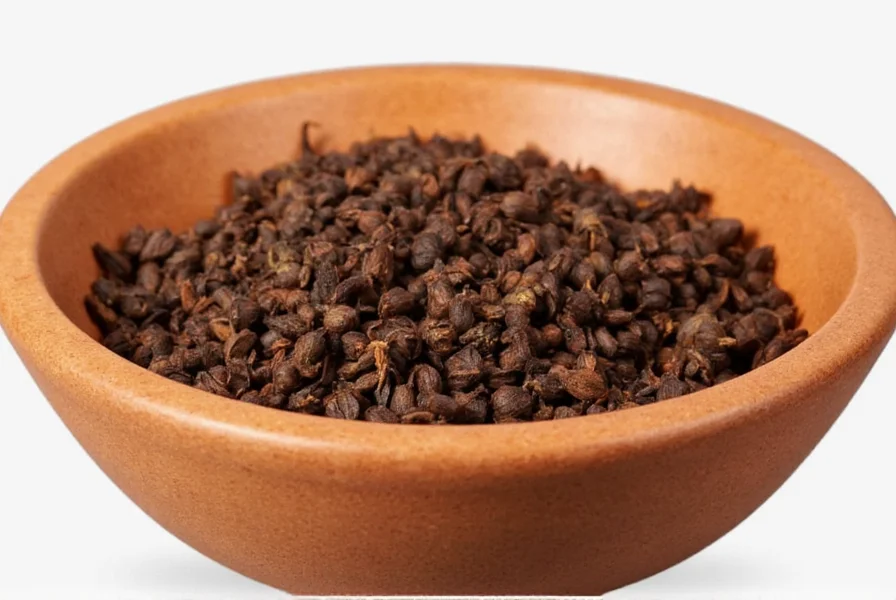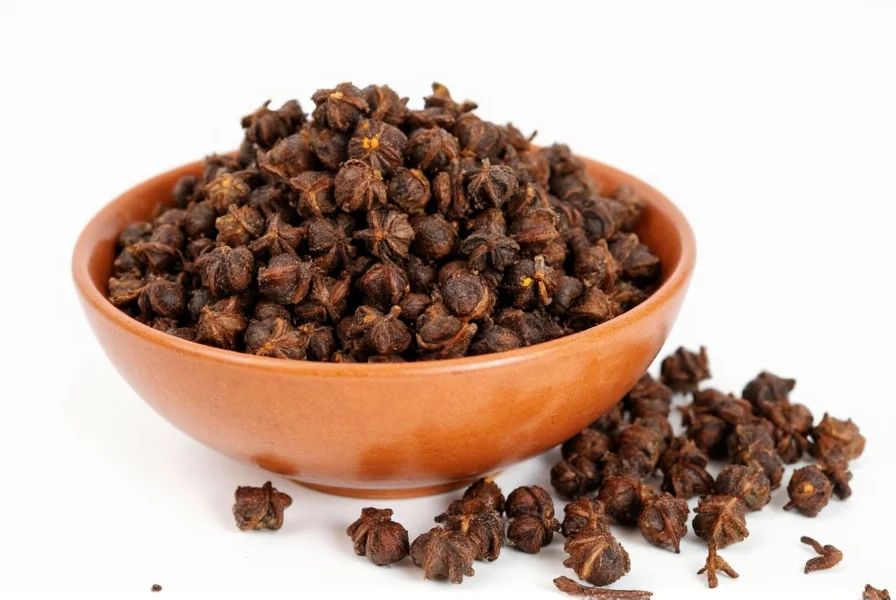Cloves are an essential spice in Indian cuisine and traditional medicine, with historical use dating back centuries. Indian cooks primarily use whole dried clove buds (Syzygium aromaticum) in spice blends, rice dishes, meat preparations, and traditional Ayurvedic remedies for their distinctive warm, sweet, and slightly bitter flavor profile.
When exploring cloves in Indian cooking, you'll discover these aromatic flower buds have been integral to the subcontinent's culinary and medicinal traditions since ancient times. Indian cuisine values cloves for their complex flavor that enhances both savory and sweet dishes while providing notable health benefits according to Ayurvedic principles. Unlike Western applications where cloves often appear only in holiday recipes, Indian cloves usage spans daily cooking across multiple regional cuisines.
Understanding how to properly select, store, and use cloves can transform your Indian recipe preparation. The highest quality cloves for Indian cooking come from Kerala and Tamil Nadu in southern India, though cloves also grow in Zanzibar and Indonesia. Indian cooks typically prefer medium-sized, dark brown cloves with intact stems that still release aromatic oil when pressed.

Historical Significance of Cloves in India
Historical records show cloves reached India through ancient spice trade routes as early as the 2nd century BCE. By the medieval period, cloves had become firmly established in Indian culinary traditions, featuring prominently in Mughlai cuisine developed during the 16th-18th centuries. Indian spice merchants carefully guarded clove cultivation knowledge, though the spice never grew natively on the subcontinent.
Traditional Indian households have long maintained clove stocks not just for cooking but for their medicinal properties. In Ayurveda, cloves (known as lavang) balance Kapha and Vata doshas while warming the digestive system. This dual culinary-medicinal role makes cloves uniquely valuable in Indian households.
Culinary Applications in Indian Cooking
Indian chefs employ cloves in multiple preparation methods across regional cuisines. The spice's intense flavor means it's typically used whole and removed before serving, though ground cloves appear in specific spice blends. Understanding how to use cloves in Indian recipes properly prevents overwhelming other flavors.
| Dish Category | Common Clove Usage | Regional Variations |
|---|---|---|
| Rice Dishes (Biryani, Pulao) | 2-3 whole cloves per cup of rice | Hyderabadi biryani uses more cloves than Lucknowi style |
| Meat Curries | 4-6 cloves for rich gravies | Mughlai recipes feature cloves prominently; South Indian versions use sparingly |
| Spice Blends (Garam Masala) | 10-15% by volume | North Indian blends contain more cloves than Eastern variants |
| Beverages (Masala Chai) | 1-2 cloves per serving | Street chai typically uses more cloves than home preparations |
Health Benefits in Ayurvedic Tradition
According to Ayurvedic medicine, cloves offer significant health benefits when used appropriately. Indian traditional healers have employed cloves for centuries to address dental pain, digestive issues, and respiratory conditions. The active compound eugenol provides natural analgesic and antiseptic properties.
Modern research supports several traditional Indian cloves health benefits, particularly regarding oral health and digestion. Studies confirm cloves' antimicrobial properties help reduce oral pathogens, explaining their historical use in dental care. When incorporated into traditional Indian medicine practices, cloves typically appear in combination with other spices to enhance bioavailability.

Practical Tips for Cooking with Cloves
Mastering cloves usage in Indian cuisine requires understanding proper techniques:
- Whole vs. ground: Always use whole cloves for slow-cooked dishes; grind only when specifically required by recipes
- Quantity control: Start with 2-3 cloves per pound of meat or cup of rice, adjusting to taste
- Toast properly: Briefly dry roast whole cloves before grinding to enhance flavor
- Storage methods: Keep in airtight containers away from light; whole cloves retain potency for 1-2 years
- Substitution guidance: Allspice offers closest flavor profile when cloves are unavailable
Many home cooks make the mistake of using too many cloves or adding them too late in the cooking process. For optimal flavor integration in Indian spice blend preparation, add whole cloves early when building flavor bases with onions and other whole spices.
Common Misconceptions About Indian Cloves
Several misunderstandings persist about cloves in Indian cooking:
- Misconception: Indian cloves differ botanically from other cloves Reality: All culinary cloves come from Syzygium aromaticum regardless of origin
- Misconception: Ground cloves work equally well in all Indian recipes Reality: Whole cloves provide superior flavor control in traditional preparations
- Misconception: Cloves primarily serve as a meat tenderizer in Indian cooking Reality: While cloves contain enzymes that tenderize, their primary role is flavor enhancement
Frequently Asked Questions
What is the proper amount of cloves to use in Indian biryani?
For authentic Indian biryani, use 2-3 whole cloves per cup of rice. The cloves should be added during the tempering stage with other whole spices. Remember to remove whole cloves before serving as they become too hard to eat after cooking.
Are Indian cloves different from other varieties?
No, cloves used in Indian cooking come from the same botanical source (Syzygium aromaticum) as cloves worldwide. The difference lies in how Indian cuisine incorporates them into spice blends and cooking techniques rather than in the cloves themselves.
How do cloves function in traditional Indian medicine?
In Ayurveda, cloves (lavang) serve multiple purposes: relieving toothaches, improving digestion, reducing nausea, and addressing respiratory issues. The eugenol content provides natural pain relief and antimicrobial properties, making cloves valuable in traditional Indian medicinal preparations.
Can I substitute ground cloves for whole cloves in Indian recipes?
While possible in some applications, whole cloves generally provide superior results in traditional Indian cooking. If substituting, use 1/4 teaspoon ground cloves for every 3 whole cloves. Note that ground cloves lose potency faster and can make dishes bitter if overused.
What are the best storage methods for cloves in Indian cooking?
Store whole cloves in an airtight container away from light and moisture. Properly stored, they maintain optimal flavor for 1-2 years. Avoid grinding cloves in advance as this accelerates flavor loss. For longest shelf life, keep them in a cool, dark pantry rather than near heat sources like stoves.











 浙公网安备
33010002000092号
浙公网安备
33010002000092号 浙B2-20120091-4
浙B2-20120091-4